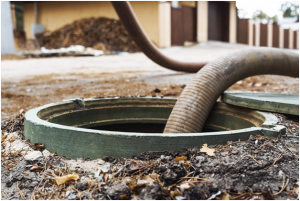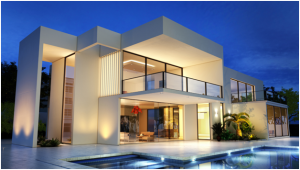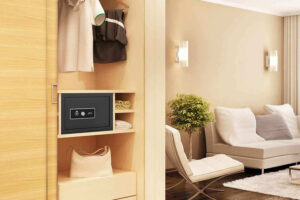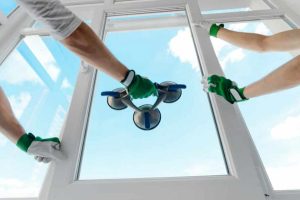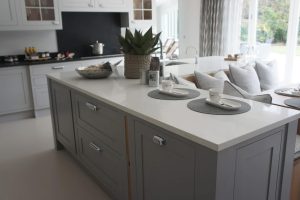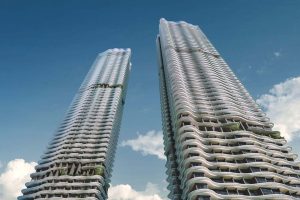Upgrade Your Home with Top Rated Windows
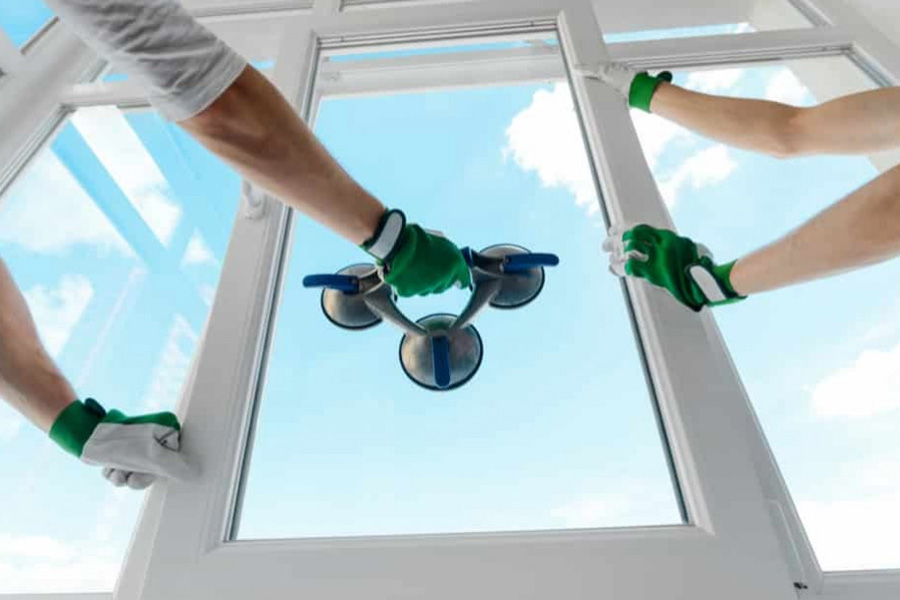
Image Source: www.windowworldtucson.com
Choosing high-quality glazing represents one of the most significant investments homeowners can make for their property. These essential fixtures serve as more than just openings to the outside world; they function as critical components that influence a home’s comfort, security, and energy performance for years to come.
Modern installations offer substantial benefits beyond basic weather protection. They contribute significantly to thermal efficiency, helping to reduce heating costs while maintaining consistent indoor temperatures. The right selection also enhances security features and improves the overall aesthetic appeal of any residence.
Technological advancements have revolutionised what’s available to today’s property owners. Contemporary designs incorporate innovative materials and construction techniques that previous generations could only imagine. This progress means homeowners now have unprecedented choices when considering upgrades or new installations.
Key Takeaways
- Quality glazing represents a long-term investment in property value and comfort
- Modern installations significantly improve energy efficiency and reduce utility costs
- Upgraded fixtures enhance both security features and aesthetic appeal
- Technological advancements offer homeowners more choices than ever before
- Proper selection considers both current needs and future property value
- Professional installation ensures optimal performance and longevity
- Regular maintenance preserves the benefits of high-quality glazing systems
Introduction to Home Window Upgrades
Modern property enhancements frequently begin with evaluating and improving window installations. Homeowners consider upgrades for various reasons, from addressing ageing fixtures to pursuing aesthetic improvements. These changes can significantly impact a property’s comfort and value.
The primary motivations for undertaking such projects include deteriorating performance of older units and the desire for better energy efficiency. Many property owners also seek aesthetic renovations or need to comply with updated building regulations. Each situation requires careful consideration of the best approach.
Different upgrade options exist to suit various circumstances. Complete replacement installations offer the most comprehensive solution. Alternatively, retrofitting existing frames with enhanced glazing units provides a cost-effective alternative. The choice depends on the specific needs of each home.
Window upgrade projects have evolved considerably in recent years. Today’s homeowners access more sophisticated products and installation techniques than previous generations. This progress means better outcomes are achievable within reasonable timeframes.
Setting realistic expectations is crucial when planning an upgrade. Professional installation ensures optimal performance, while proper preparation minimises disruption. Understanding the process helps homeowners make informed decisions about their property improvements.
The Evolution of Windows Versions
The journey of residential glazing systems spans centuries of innovation and refinement. Each new version addressed limitations of previous designs while introducing improved functionality.
From Early Windows to Modern Editions
Early residential openings featured single glass panes in basic timber frames. These simple designs served for generations but offered poor insulation.
The mid-20th century brought significant changes with double glazing technology. This development dramatically improved thermal performance and reduced condensation issues.
Recent years have seen accelerated innovation in glazing systems. Modern editions incorporate triple-pane construction and advanced coatings for superior energy efficiency.
Key Milestones in Windows History
The development timeline shows clear progression in material science and manufacturing techniques. Each series of improvements built upon previous advancements.
Major technological releases have consistently raised performance standards. Building regulations and environmental awareness drove many of these changes over time.
| Era | Key Development | Primary Impact |
|---|---|---|
| Pre-20th Century | Single-pane timber frames | Basic weather protection |
| 1960s | Double glazing introduction | Improved thermal insulation |
| 1980s | uPVC frame technology | Enhanced durability and maintenance |
| 2000s-Present | Low-E coatings and triple glazing | Superior energy efficiency |
Manufacturing advances now allow larger panes and slimmer profiles. Contemporary systems balance aesthetic appeal with exceptional performance characteristics.
Understanding Different Types of Windows
The market offers a diverse array of window configurations, each tailored to specific needs and architectural styles. Homeowners can choose from several principal types, including casement, sash, tilt-and-turn, bay, bow, and fixed pane designs.
Casement versions are side-hinged and open outwards. This design provides excellent ventilation control and unobstructed views. They are a popular choice for contemporary homes seeking clean lines.
Traditional sash windows slide vertically. They maintain their charm in period properties. Modern manufacturing enhances their thermal performance and smooth operation.
Tilt-and-turn windows represent a versatile European edition. They feature a dual opening mode for secure ventilation and easy cleaning. This functionality has gained significant traction in the UK.
Bay and bow configurations project outward from the building’s facade. They create additional interior space and add architectural character. These styles also increase natural light penetration dramatically.
Fixed pane glazing is used where ventilation is not required. It offers maximum glass area and structural simplicity. This type is often combined with opening units for optimal results.
Emerging designs incorporate innovative features like integrated blinds and self-cleaning glass. These advancements represent the latest evolution in residential glazing technology. Understanding these options helps homeowners make informed decisions for their property.
Importance of Energy Efficiency in Window Design
Energy performance now stands as the foremost priority in contemporary glazing design. This focus directly influences household heating costs, environmental impact, and year-round comfort.
Heat escapes through glazing via three main processes. Conduction transfers heat through the frame and glass. Convection involves air movement within the glazing unit. Radiation allows heat energy to pass directly through the glass.
Traditional single-pane units performed poorly because they offered little resistance to these processes. Modern multi-pane designs create effective barriers.
Innovative Materials for Reduced Heat Loss
Advanced materials have revolutionised thermal performance. Low-emissivity (Low-E) coatings are microscopically thin metallic layers applied to glass. They reflect infrared radiation back into the room, significantly reducing heat loss.
The cavities between glass panes are often filled with inert gases like argon or krypton. These gases are less conductive than air, slowing heat transfer. Warm-edge spacer bars separate the panes while minimising thermal bridging at the edges.
These features combine to create highly efficient windows. They can reduce heat loss by up to 75% compared to older single-glazed versions.
| Glazing Technology | Key Feature | Impact on U-Value* |
|---|---|---|
| Double Glazing (Air Filled) | Two panes of glass | Approx. 2.8 W/m²K |
| Double Glazing (Argon Filled) | Inert gas fill | Approx. 1.6 W/m²K |
| Double Glazing (Low-E & Argon) | Coating and gas fill | Approx. 1.2 W/m²K |
| Triple Glazing (Advanced) | Three panes, coatings, gas | Below 0.8 W/m²K |
*A lower U-value indicates better insulating performance.
UK building regulations have driven these changes over recent years, demanding higher efficiency. This technology offers long-term financial savings and supports sustainability goals. Future design may include smart glass that adapts its properties.
Choosing Quality Windows for Your Home
Homeowners face critical choices when upgrading their property’s openings, weighing long-term performance against immediate visual impact. The selection process requires careful consideration of multiple factors beyond basic appearance.
Assessing Durability and Aesthetic Appeal
Quality assessment begins with material thickness and construction methods. Premium products feature reinforced frames and durable hardware that withstand decades of use.
Aesthetic harmony with your home’s architecture remains equally important. Colour options and hardware finishes should complement existing design elements while reflecting personal style preferences.
| Quality Indicator | Premium Feature | Budget Alternative |
|---|---|---|
| Frame Construction | Multi-chamber reinforced profiles | Single-chamber basic frames |
| Glazing Specification | Low-E coated, gas-filled units | Standard double glazing |
| Hardware Quality | Marine-grade stainless steel | Basic zinc alloy components |
| Warranty Coverage | 10+ years comprehensive | 2-5 years limited |
Installation Best Practices for Optimal Performance
Professional installation ensures your investment delivers maximum benefits. Experienced fitters understand correct measurement techniques and weatherproofing requirements.
Proper installation prevents common issues like drafts and moisture penetration. Homeowners should verify smooth operation and complete sealing before accepting completed work.
Upgrading Your Home with Windows By Design
Specialist guidance elevates window selection beyond simple product choices to comprehensive property enhancements. Professional design services understand how architectural requirements, aesthetic preferences, and performance objectives vary between properties.
These experts approach projects holistically, considering factors like property age, exposure conditions, and homeowner lifestyle. This ensures recommendations address specific needs rather than offering standardised solutions.
The consultation process typically includes detailed site surveys and thermal performance assessments. Homeowners receive comprehensive proposals enabling fully informed decisions about their upgrade projects.
Customisation proves particularly valuable for non-standard openings or listed building requirements. Bespoke solutions overcome challenges that off-the-shelf products cannot adequately address.
| Service Level | Key Features | Ideal For |
|---|---|---|
| Standard Consultation | Basic assessment, product recommendations | Straightforward replacements |
| Comprehensive Design | Full site survey, thermal analysis, custom proposals | Period properties, complex installations |
| Full Project Management | End-to-end coordination, installation oversight | Major renovations, minimal disruption required |
Professional project management ensures seamless execution from consultation through installation. This coordination minimises household disruption while guaranteeing optimal results.
Design specialists maintain current knowledge of evolving technologies and building regulations. They recommend solutions incorporating latest innovations while ensuring compliance.
The relationship extends beyond installation with ongoing support and maintenance advice. Windows By Design establishes long-term partnerships focused on lasting property enhancement.
Expert Window Installation Services
The difference between adequate and exceptional window performance often lies in the expertise of the installation team rather than the product specifications. Even premium units cannot deliver their designed benefits without skilled fitting by qualified professionals.
Expert installers distinguish themselves through specialist training and manufacturer certifications. They possess comprehensive insurance coverage and demonstrated experience with diverse installation scenarios. This ensures consistently excellent results across various property types.
Partnering with Windows By Design Ltd
Professional installation services encompass comprehensive pre-installation surveys and precise measurements. They conduct careful removal of existing units and thorough structural assessments. Proper fitting of new products and meticulous finishing work leave properties clean and fully weatherproofed.
Reputable companies adopt a partnership approach characterised by clear communication and realistic scheduling. Transparent pricing and collaborative problem-solving address unexpected challenges during project execution. This professional service protects homeowners’ interests through proper insurance and workmanship guarantees.
Established installation firms maintain expertise through continuous professional development. They stay current with evolving techniques, building regulations, and industry best practices. Comprehensive aftercare support includes adjustment visits, maintenance guidance, and responsive service throughout the product lifespan.
Latest Windows Update and Technology Enhancements
The latest generation of window products incorporates cutting-edge innovations that redefine home comfort and efficiency. Manufacturers continue to push boundaries with each new product release, introducing sophisticated features previously unavailable to homeowners.
Recent technological updates include advanced acoustic glazing that reduces external noise by up to 45 decibels. Self-cleaning glass coatings break down organic dirt when exposed to UV light, significantly reducing maintenance requirements. Integrated sensors now monitor window status and environmental conditions, providing valuable information about home performance.
Frame materials have seen substantial improvements with composite constructions combining timber’s aesthetic appeal with synthetic durability. Hardware updates feature multi-point locking mechanisms and friction hinges for smoother operation. These changes enhance both security and user experience.
Smart home integration represents another significant advancement. Motorised operators and connectivity features enable remote control and automated operation based on environmental conditions. This technology allows seamless integration with whole-house management systems.
Manufacturers communicate these enhancements through detailed technical documentation and certification schemes. This ensures homeowners understand precisely what features each version offers, making informed decisions about their property upgrades.
Safety and Security in Modern Windows Designs
Modern home security begins with robust window designs that deter intrusion attempts. Contemporary products incorporate multiple protective features addressing both deliberate break-ins and accidental household injuries.
Physical security enhancements include laminated glass that remains intact when broken. Reinforced frames withstand forcing attempts while multi-point locking systems engage at multiple positions. These design elements prevent common attack methods used by intruders.
Certification through standards like Secured by Design and PAS 24 provides objective assurance of genuine protection. Child safety considerations include restrictors limiting opening distances. Hardware positioning ensures adult operation while preventing child access.
Security integration maintains aesthetic appeal through discreet hardware finishes. Slim-profile reinforcements and smooth-operating locks offer robust protection without visual compromise. Proper installation and maintenance support long-term security effectiveness.
Insurance requirements often favour certified products, potentially reducing premiums. Emerging technologies include impact-resistant glazing and electronic monitoring devices. These innovations represent the cutting edge of residential window security.
Enhancing Home Security with Advanced Window Features
Contemporary window technologies incorporate sophisticated security measures that significantly enhance home safety. These advanced features function as critical components within layered defence systems, combining physical barriers with detection capabilities.
Visible security elements serve as powerful deterrents against opportunistic intruders. Robust frames, substantial hardware, and laminated glazing discourage attempts to overcome well-protected openings.
Modern security extends beyond basic locking mechanisms to include integrated alarm contacts and vibration sensors. These devices connect with whole-house security systems, providing immediate notification of intrusion attempts.
Ground-floor and easily accessible openings require enhanced protection while maintaining emergency escape functionality. Tilt-and-turn designs enable secure ventilation modes that prevent intrusion whilst allowing airflow.
Advanced glazing specifications offer security benefits beyond basic breakage resistance. Impact-resistant formulations withstand sustained attacks, while one-way vision films prevent observation of interior spaces.
Coordinating window security with external lighting and surveillance systems creates comprehensive protection. Regular maintenance checks and hardware lubrication ensure these features remain effective throughout their lifespan.
Technology and Features in New Windows Editions
Contemporary glazing editions now function as interactive elements within connected home ecosystems. This technological evolution transforms residential openings from passive fixtures into responsive components that actively manage indoor environments.
The latest versions incorporate sophisticated automation features that respond to changing conditions. These intelligent systems offer homeowners unprecedented control over their living spaces.
Interactive User Interfaces and Smart Controls
Modern window technology integrates seamlessly with popular home automation platforms like Amazon Alexa and Google Home. This connectivity enables voice commands, scheduled operations, and automated responses to weather changes.
Homeowners can control their glazing systems through multiple interfaces:
- Smartphone applications providing remote access
- Dedicated control panels with intuitive displays
- Voice commands through virtual assistants
- Automated schedules based on household patterns
Advanced editions include environmental sensors that monitor air quality and temperature. These devices automatically adjust ventilation mode settings to maintain optimal indoor conditions.
The integration extends to security systems, with automatic closing when alarms activate. This comprehensive approach creates a truly intelligent home environment where all components work in harmony.
User Guide to Windows Installation and Maintenance
Proper installation and regular maintenance are fundamental to maximising the performance and lifespan of residential glazing. This guide provides homeowners with essential information to support their investment.
Following correct procedures ensures optimal energy efficiency, security, and operational smoothness. It also helps to preserve manufacturer warranties.
Installation Tips and Troubleshooting Advice
A successful installation begins with precise measurements. Accurate sizing prevents operational issues later on.
Ensure frames are properly supported during fixing to avoid distortion. Effective weatherproofing is crucial for preventing drafts and water ingress.
Common problems include stiffness when opening, which often indicates frame distortion. Condensation between panes suggests a failed seal.
Blocked drainage channels can lead to water penetration. Addressing these issues promptly protects the unit’s integrity.
Maintenance Recommendations for Longevity
A simple care schedule significantly extends product life beyond typical expectations. Regular attention prevents minor issues from becoming major repairs.
Homeowners should establish a routine that includes the following key tasks:
| Frequency | Task | Key Benefit |
|---|---|---|
| Quarterly | Inspect seals and weatherstripping | Prevents drafts and energy loss |
| Twice Yearly | Clean drainage channels | Avoids water damage |
| Annually | Lubricate moving parts | Ensures smooth operation |
| Periodically | Adjust hinges and locks | Maintains security and function |
Use appropriate cleaning products for different frame materials. This careful maintenance preserves the appearance and functionality of your windows for many years.
Recognising when to call a professional is also important. Persistent difficulties or visible damage often require expert support.
Spread of Windows Compatibility Across Devices
Modern residential glazing now functions as an integrated component within broader home automation ecosystems. These advanced products communicate with various household systems to enhance comfort, security, and efficiency.
This seamless integration transforms them from passive fixtures into active, responsive elements of the home.
Ensuring Seamless Integration with Home Systems
Compatibility with heating and ventilation systems is a key benefit. Intelligent glazing can work with thermostats to optimise temperature control.
This synergy reduces energy consumption by preventing heat loss. It maintains comfortable conditions automatically.
Security integration is equally important. Contact sensors and motion detectors connect these units to central alarm platforms.
This coordination provides comprehensive property protection. Different devices work together for enhanced safety.
Home automation platforms present another layer of integration. Standard communication protocols allow for smooth connectivity.
This enables automatic responses to signals from weather stations or occupancy sensors. The ability to connect is crucial for modern homes.
| Integration Type | Key Connected Device | Primary Benefit |
|---|---|---|
| Climate Control | Smart Thermostats | Optimised Energy Efficiency |
| Security | Alarm Systems | Enhanced Property Protection |
| Convenience | Voice Assistants | Hands-Free Operation |
Retrofit situations can pose compatibility challenges. New products must often interface with existing systems.
Manufacturers facilitate this through technical documentation and interface devices. These bridge gaps between different generations of technology.
Future trends point towards universal standards and cloud-based control. This will further simplify the integration process for homeowners.
The Future of Home Windows and Design Trends
Emerging technologies promise to revolutionise residential openings, turning them from passive fixtures into active environmental managers. This preview of coming changes reveals exciting possibilities for homeowners.
Upcoming Innovations in Window Technology
The next product version will feature transparent photovoltaic glazing. This innovation generates electricity while maintaining visibility.
Adaptive insulation systems represent another major development. They adjust thermal resistance based on external conditions automatically.
Self-tinting glass optimises solar heat gain without power requirements. These technologies are in advanced development stages now.
Market Predictions and Future Styles
Market analysts predict significant changes in residential design preferences. Slimmer profiles and larger panes will dominate future styles.
The commercial release timeline shows gradual implementation over coming years. Some technologies will reach markets within two years.
| Innovation Type | Expected Release Time | Key Design Feature |
|---|---|---|
| Transparent Solar Glazing | 2025-2026 | Energy generation + visibility |
| Adaptive Insulation | 2026-2027 | Self-adjusting thermal properties |
| Advanced Self-Tinting | 2024-2025 | Power-free operation |
This preview indicates a bright future for residential design. The coming years will bring remarkable changes to window technology.
Tips for Customising Your Window Layout
Personalising window arrangements transforms a house into a tailored living environment that reflects individual lifestyles. This customisation process considers both functional performance and aesthetic outcomes through thoughtful placement and configuration decisions.
Different rooms benefit from specific layout approaches. Kitchens often need strategically positioned openings for task lighting and ventilation control. Bedrooms require layouts that balance natural light with privacy considerations for quality sleep.
Window positioning dramatically affects light distribution throughout interior spaces. Cross-lighting techniques using openings on multiple walls create balanced illumination. Clerestory placements can illuminate deep into rooms while managing solar heat gain.
Standard product ranges offer numerous customisation options. Homeowners can select divided light patterns for traditional character or custom colour finishes that coordinate with architectural schemes. Hardware selections reflect personal style while maintaining operational requirements.
For unique architectural situations, manufacturers can produce truly bespoke solutions. These address non-standard openings, heritage property requirements, or distinctive design visions beyond standard product capabilities.
Effective customisation balances aesthetic desires with practical considerations. Layouts must maintain adequate ventilation and satisfy building regulations for escape routes. They should also provide appropriate daylight levels for intended room uses.
Professional design consultation supports successful customisation outcomes. Experienced advisors suggest layout alternatives homeowners might not have considered. They identify potential issues before installation commitments are made.
Digital visualisation tools help users preview customised layouts before installation. Computer-generated imagery and augmented reality applications ensure final results align with expectations, avoiding post-installation disappointments.
Conclusion
Homeowners who approach window upgrades with comprehensive knowledge and professional guidance position themselves to achieve optimal results that justify the initial investment. The detailed information presented throughout this article empowers users to make informed decisions about their property enhancements.
Quality installations deliver substantial long-term benefits that extend well beyond immediate aesthetic improvements. These enhancements significantly impact energy efficiency, security, and overall home comfort. Professional support ensures proper specification and installation for lasting performance.
The right service partnership transforms what could be a complex undertaking into a straightforward process. This careful approach guarantees that the investment delivers expected returns through reduced utility costs and enhanced property value.
Armed with this comprehensive understanding, homeowners can confidently navigate their upgrade projects. They can select solutions that genuinely meet their requirements while avoiding common pitfalls.
FAQ
What are the main benefits of upgrading my home’s windows?
Upgrading offers several advantages, including improved energy efficiency which lowers heating bills, enhanced security features for greater peace of mind, and reduced external noise. Modern designs also provide a significant boost to a property’s aesthetic appeal and overall value.
How do I know which type of window is best for my home?
The best choice depends on your specific needs, such as the property’s architectural style, desired energy performance, and budget. Popular options include double-glazed uPVC units for excellent thermal insulation and durable aluminium frames for a sleek, modern look. Consulting with a specialist like Windows By Design Ltd can help identify the ideal solution.
What is involved in a professional window installation service?
A professional service typically begins with a consultation and precise measurement of the openings. Expert fitters then remove the old units and install the new ones, ensuring a perfect, weather-tight seal. They will also clean up the work area and provide care instructions, guaranteeing optimal performance and longevity for the products.
How often should windows be maintained or replaced?
High-quality windows require minimal maintenance, usually just regular cleaning of the glass and frames. Their lifespan can be 20 years or more, depending on the materials. Replacement is generally considered if units show signs of significant damage, persistent drafts, or condensation between glass panes, indicating failed seals.
Can new windows improve my home’s security?
Absolutely. Contemporary designs incorporate advanced security features as standard. These often include multi-point locking systems, reinforced frames, and toughened glass. These enhancements create a robust barrier, significantly improving a home’s protection against potential intrusions.
Are there smart technology options available for new windows?
Yes, the market now offers various smart solutions. Homeowners can opt for sensors that alert them if a window is left open or automated opening systems that can be controlled remotely via a smartphone app. These technologies integrate with modern home automation platforms for added convenience and control.

